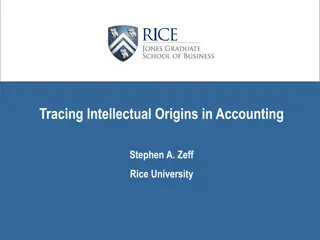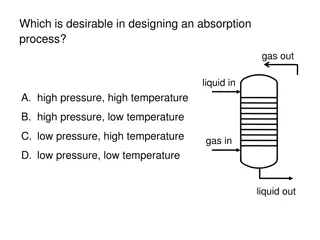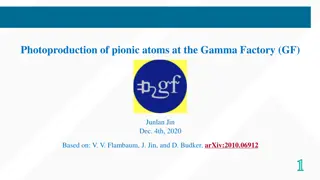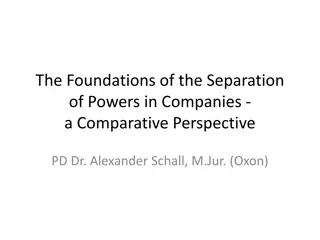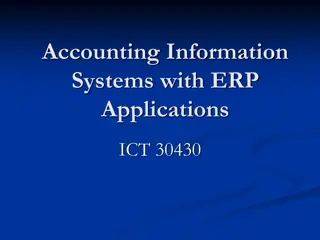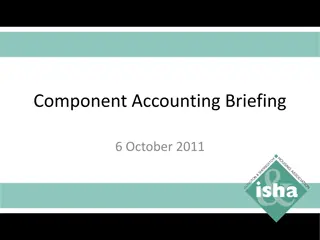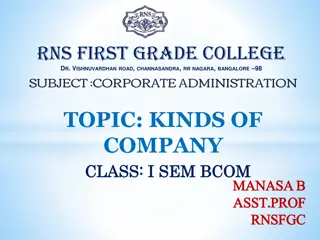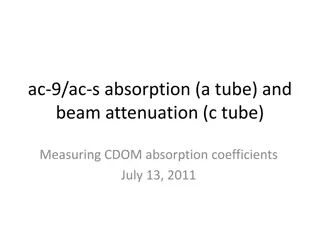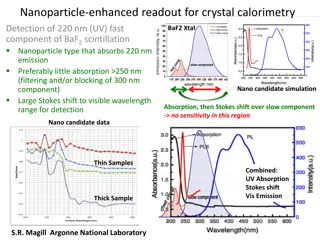Understanding the Absorption of Companies: Types, Objectives, and Accounting
Exploring the concept of absorption of companies, this content delves into various aspects such as types of amalgamation/absorption, objectives of the process, AS 14 accounting standards, and differences between pooling interest method and the purchase method. It also highlights the key accounts involved like Realisation A/C, Purchasing Company A/C, and Equity Shareholders A/C.
Uploaded on Sep 28, 2024 | 0 Views
Download Presentation

Please find below an Image/Link to download the presentation.
The content on the website is provided AS IS for your information and personal use only. It may not be sold, licensed, or shared on other websites without obtaining consent from the author. Download presentation by click this link. If you encounter any issues during the download, it is possible that the publisher has removed the file from their server.
E N D
Presentation Transcript
Absorption of companies BY: KIRAN DILIP PATIL KISAN ACS COLLEGE PAROLA
Absorption Purchase of Existing Company By another Existing company Merge Selling company get dissolved No new company formed
3 Objectives Eliminate Competition Implement of Uniform Policy Control all activity Economies of Large Scale Production Reduction in Expenditure Building Strong structure Expansion Boosting Efficiency
Types Amalgamation/Absorption in the Nature of Merger: 5 condition All the Assets & Liabilities take over by new co. New co. will Record all the Assets & Liabilities @ book Value 90% of the old shareholder agree to become shareholder of new co. The payment to eq. shareholder is paid by issuing eq share of New co. Business od transferee co. intended to carried on.
Amalgamation/Absorption in the Nature of Purchase : any one condition All the Assets & Liabilities not take over by new co. New co. will not Record all the Assets & Liabilities @ book Value 90% of the old shareholder not agree to become shareholder of new co. The payment to eq. shareholder is paid by issuing cash, debenture with/without eq share of the New co. Business of transferee co. not intended to carried on.
AS 14 accounting for absorption: W.e.f 1/4/1985 Two Methods of accounting- Pooling interest method(nature merger) all assets,li,&reserve the purchase method.(nature of purchase) Taken over only . No reserve other than statutory reserve will be recorded.
Difference Basis Pooling interest method the purchase method Application in the Nature of Merger in the Nature of Purchase Valuation Valued as per Book Value Shown in new B/S Valued as per faireValue GR & Surplus Not Shown in new B/S Amalgamation adj. A/c Goodwill/Cap Res A/c Payment of Liquidation exp s Not required Not required Debited to P&L A/c required required Need to open Goodwill/Cap Res A/c PC Normally in shares Shares/Debentures or in Cash
8 Accounts Involved Realisation A/C Purchasing Company A/C Equity Shares in Purchasing Company A/C Equity Shareholders A/C
9 Purchase Consideration( PC) Price AS14 Can paid in Shares Other secirities Cash ALL
10 Methods of PC Lump-Sum Amt. Net Payment Basis Net Asset Method Swap Ratio








